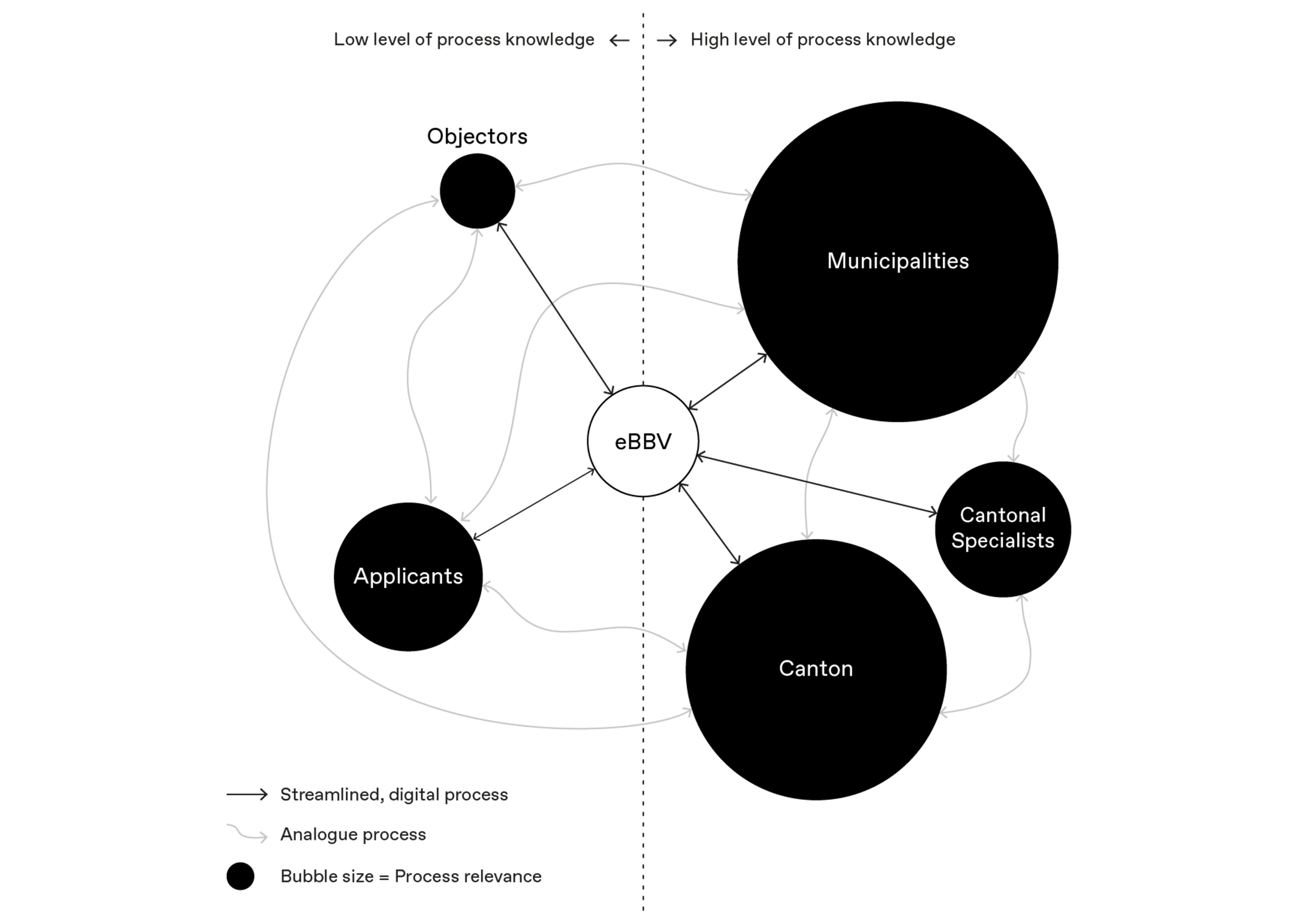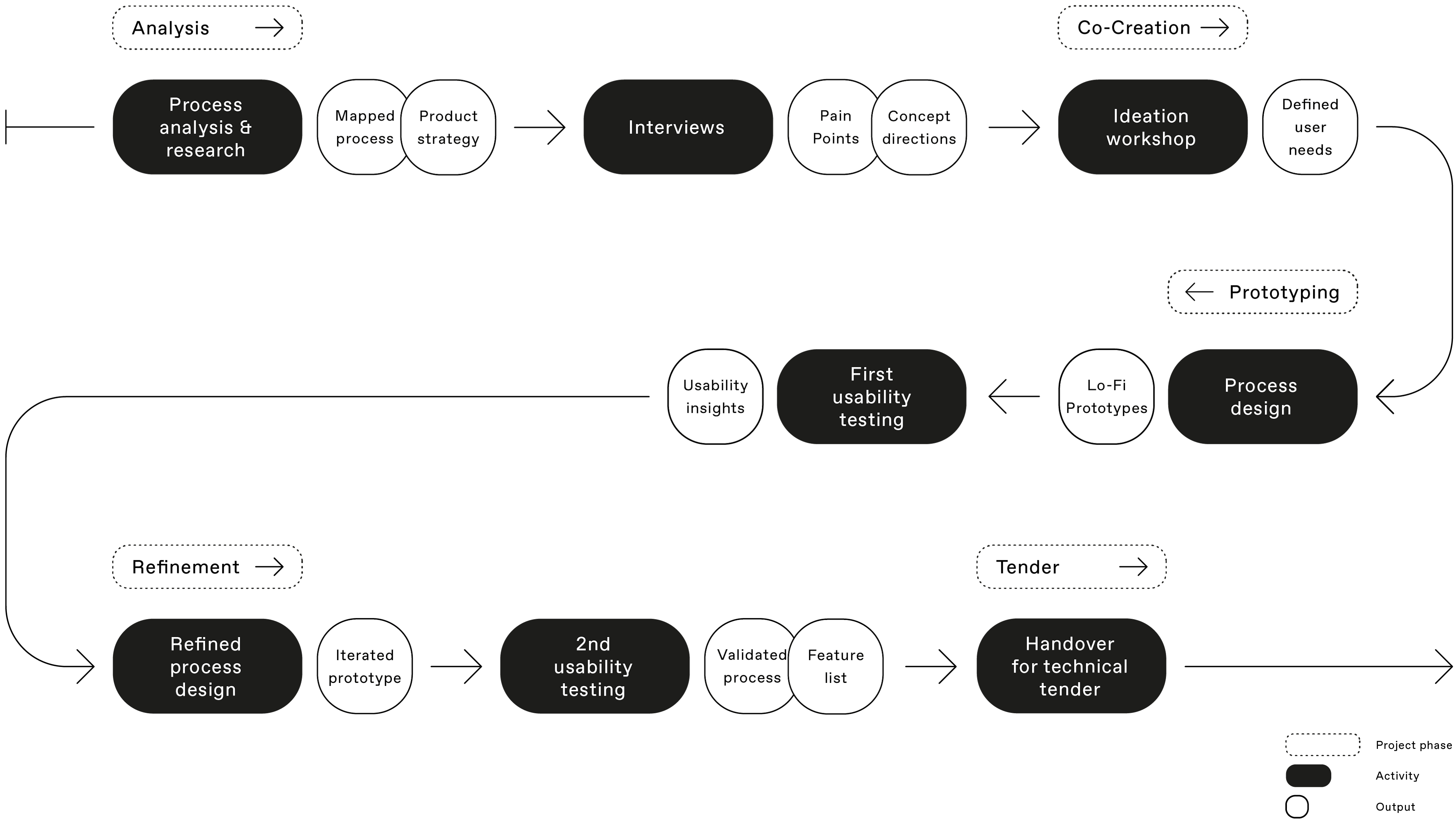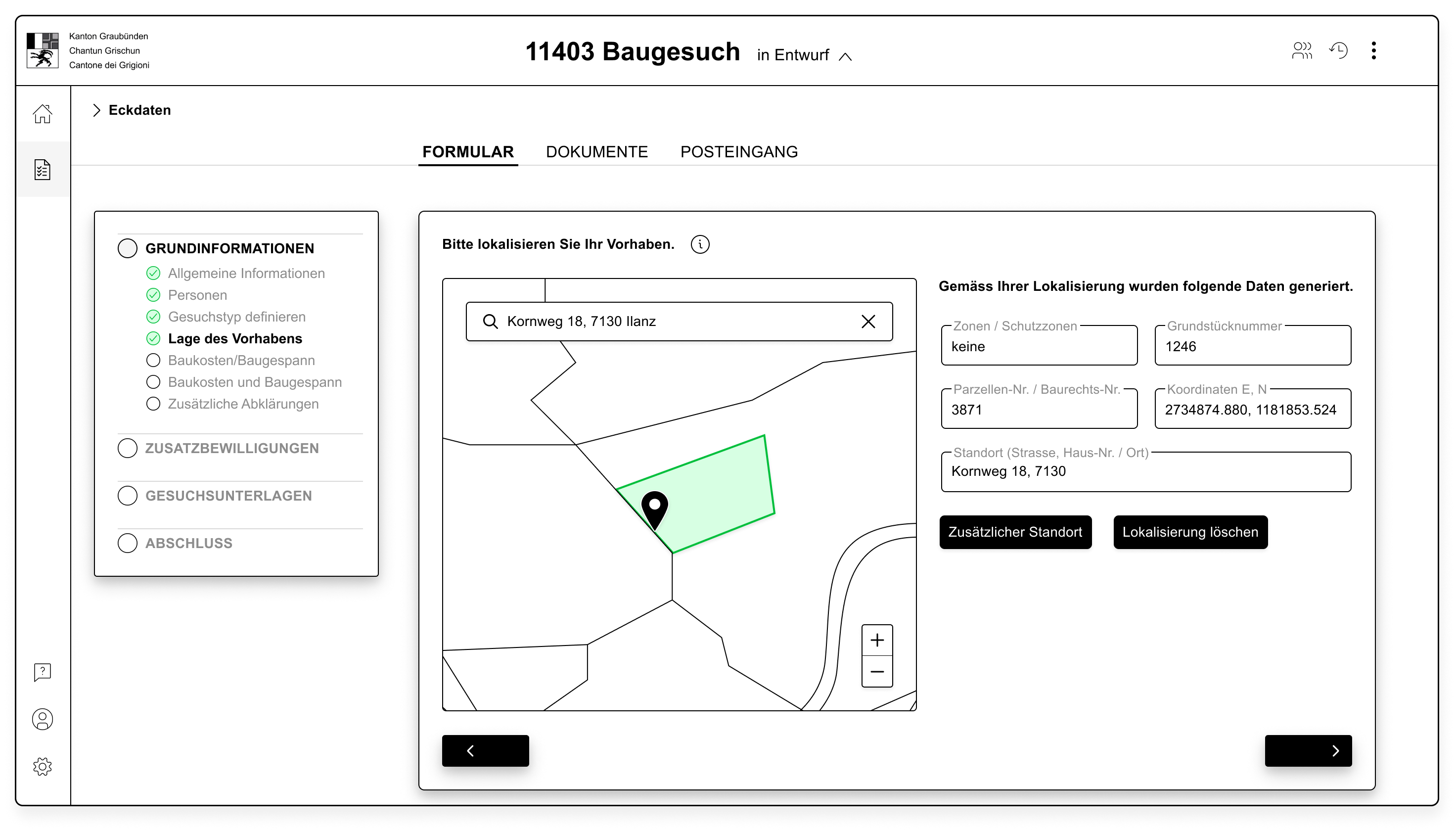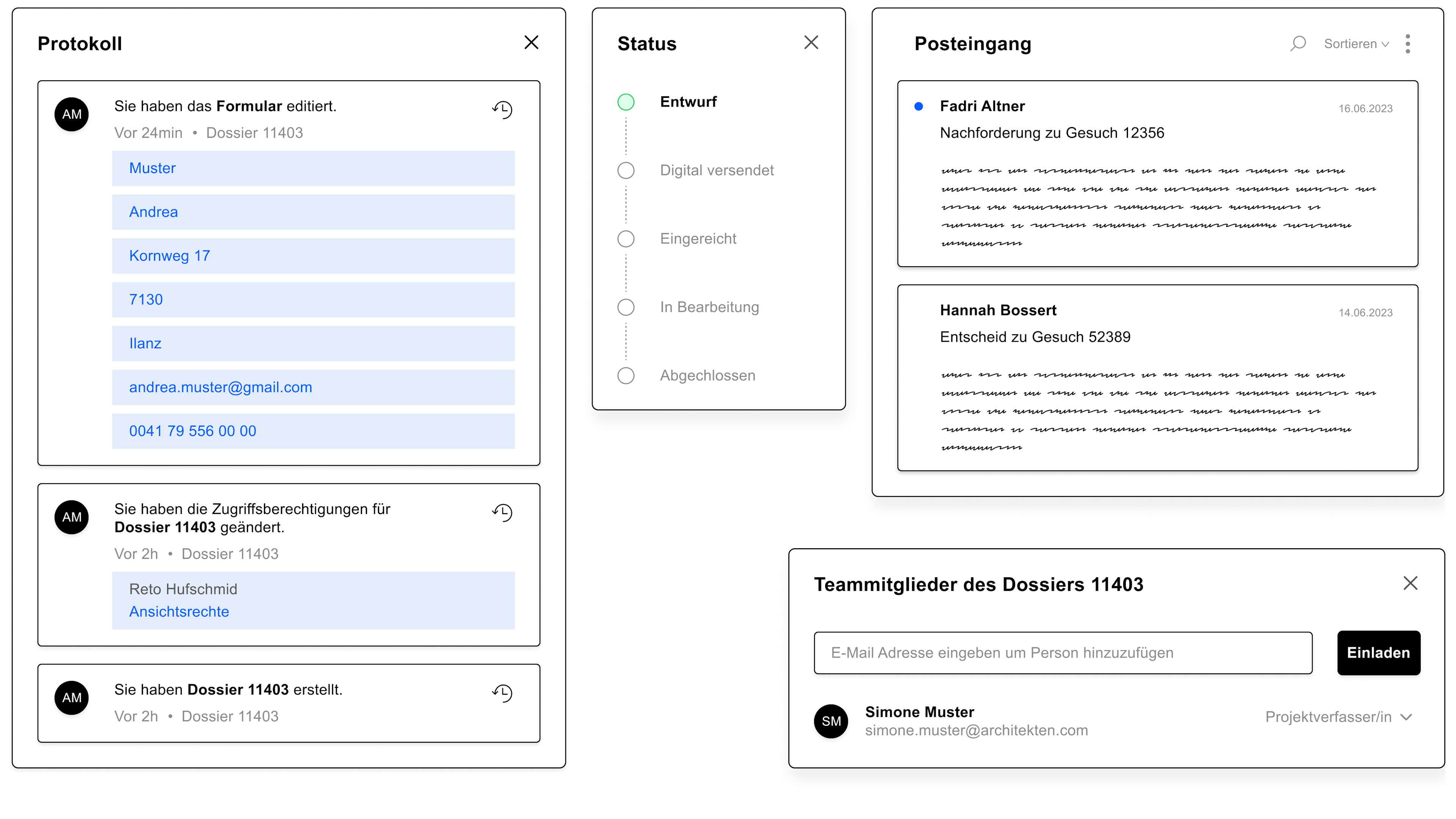Designing for government

Design for administration is an increasingly relevant topic. Modern public administrations have recognised the importance of well-designed experiences and processes - both for their citizens and for their employees. Our collaboration with the Amt für Raumentwicklung Graubünden shows how our design practice can support them.
Bridging the gap: firm specifications vs. soft needs
News reports about massive cost overruns and delays in public procurement of IT infrastructure projects and digitalization initiatives make daily headlines. Whether it's the sourcing of the Swiss Air Force's new airspace surveillance system or the digital tax processing system for the Canton of St. Gallen, public digitalization projects are particularly susceptible. Besides the inherent complexity of technologies and the challenges of integration, political and bureaucratic hurdles, inadequate requirement clarification often hinders projects from staying on budget and schedule.
Many problems during implementation originate in the earliest phases of project definition. Also, public IT projects are traditionally planned from a technical perspective. This approach can lead to the neglect of the often elusive "soft" demands, wishes, and challenges of future users—the citizens—during early requirement gathering. In the ongoing project, adjustments must be made, resulting in cost and schedule overruns, or in the worst case, a subpar solution without user acceptance.

In contrast to the private sector, which typically targets specific and homogenous user groups, the public sector must cater to the needs of the entire population. Public projects must account for demographic, regional, and linguistic differences, as well as a broad spectrum of educational levels, digital competencies, sociocultural, and socioeconomic characteristics.
While classic requirement engineering is very competent in defining technological and system-related conditions, it is the design that brings the competence and methods to capture, make tangible, and understandable these highly system-relevant, predominantly qualitative factors concerning user needs.
In collaboration with Basler & Hofmann, we had the opportunity to address these challenges in the earliest phase of public procurement for the new digitalized building application process at the Amt für Raumplanung in Graubünden (ARE).

Citizen-centric design and testing
Our collaboration was founded on the belief that early validation of the most critical user requirements during procurement would have a positive impact on subsequent implementation. Furthermore, involving all relevant user groups, spanning from the general public to various governmental bodies in Graubünden, aimed to foster transparency and trust in the new system as early as possible.
Technical specifications were developed by teams from ARE, Basler & Hofmann, a lawyer specializing in public procurement, and a communication expert. Our task was to create a tailored validation process for the tender, examining all usability aspects of future interaction processes among relevant stakeholders.
In the trilingual mountainous canton of Graubünden, building applications range from elaborate multimillion-franc hotel projects designed by renowned architects to simple stable extensions illustrated in hand-drawn sketches. The most remote hamlets in the high mountains, with just a handful of inhabitants, deserve as much consideration as the urban centers in the valleys. Initially, our goal was to understand and map the varying requirements and capabilities of these diverse target groups, including property owners, administrative staff in municipalities, and cantonal authorities. Overcoming the demographic-based digital divide and addressing numerous media discontinuities in official correspondence were significant challenges as well.

In the first step, we conducted interviews with all stakeholders, capturing, analyzing, and making comparable their specific pain points, wishes, and needs. To comprehend and visualize the processes and communication pathways among the involved municipal and cantonal offices and specialized agencies, we conducted collaborative sessions with public servants. Building on these insights, we transformed all business process diagrams (BPDs) created during the requirement analysis into four descriptive and comprehensible wireframe prototypes.
The primary objective was to test the entire building permit procedure as quickly as possible with actual users. The results of these tests were processed through an iterative improvement process and reevaluated in a second usability testing round. In total, over 30 usability tests were conducted based on the four distinct click prototypes. Based on these findings, a comprehensive list of suggested changes, additions, and criteria for the procurement process was compiled.

Design for all
Our experience highlights the growing importance of design in modern public administration. This was evident in our collaboration with the Amt für Raumentwicklung Graubünden. Design methods and practices played a crucial role in clarifying and illustrating user-centered requirements and processes.
The advantages of design methods in this context are diverse:
Firstly, they enable the early and comprehensive involvement of relevant user groups, ranging from the general public to various government levels. This fosters transparency and trust and promotes the acceptance of new systems from the outset.
Secondly, design emphasizes user-centricity, ensuring that user needs and expectations take center stage. This helps in defining requirements more clearly and ensures that solutions genuinely meet the needs of the broader population.
Thirdly, design allows for the visualization and illustration of complex processes and concepts, whether through prototypes, wireframes, or other design elements. This facilitates communication and understanding of complex projects and streamlines decision-making.
Overall, design methods can contribute to making public procurements more efficient and user-friendly. They help identify problems early, develop user-centered solutions, and promote collaboration among various interest groups. In the best case, this helps reduce the risk of budget and deadline overruns and also strengthens the trust of citizens in public administration.
This article is based on a talk by Meret Wacker, Senior Designer at FOND Design, at the international symposium "Design for/in Government" organized by the Swiss Design Association in Zurich.
